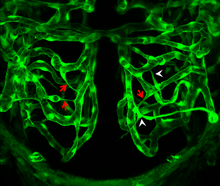Non-Invasive High Resolution Near-Infrared Imaging for Hemodynamics Monitoring and Tumor Detection (Samsung GRO)
Themes: Health and Wellbeing
Large high-resolution imaging sensor aimed at the diagnosis and treatment of cancer and functional imaging of the brain
The aim is to develop a new type of NIRI system based on a new large format SPAD sensor capable of picosecond resolution in each pixel or cluster of pixels, independently. The NIRI system will employ laser sources pulsed at over 80MHz with picosecond pulse width. Several wavelengths will be used to illuminate the tissue. The new NIRI system will have an unprecedented spatial resolution better than 1 mm. The success of NIRI crucially depends on the spatial resolution that can be achieved. It is impossible to estimate this resolution, because it depends on many non-trivial factors. Each improvement in resolution will lead to an improved scientific and clinical applicability even if the aim of 1 mm is not achieved.
One of the key points of the system is that it has to work in real time in order to be able to measure hemodynamics and to try to minimize movement induced artifacts. In this aspect the main limitations come from the speed of the detector which can be greatly improve as the currently used device was not conceived for this application.
Once the system is built working with multiple wavelength laser sources and a sampling frequency that enables real time monitoring, clinical trials in the diagnosis and treatment of cancer and functional imaging of the brain and other organs can be performed to demonstrate the advantages of the newly developed device with respect to other established techniques.

Project data
| Researchers: | Edoardo Charbon, Myung-Jae Lee |
|---|---|
| Starting date: | August 2013 |
| Closing date: | December 2014 |
| Sponsor: | Samsung |
| Contact: | Edoardo Charbon |